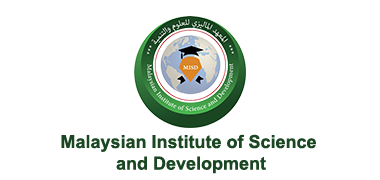
Journal of Manuscripts & Libraries for Specialized Research (JMLSR)
About the Journal :
The International Journal of Manuscripts & Libraries for Specialized Research, published quarterly on behalf of the Malaysian Institute of Science and Development is a referred scientific journal, which is supervised by a group of scholars who are specialized in heritage, museums, and library studies in the Arab and international universities.
The objectives of this journal are: – To spot light on our memorable history to inspire a brighter future; – To stimulate the minds of researchers and adorers of heritage; -To exert efforts for the purpose of mobilizing skills and capacities in gathering various cultural, thoughtful, and heritage backgrounds; -To interact with the important aspects of our bountiful heritage, by and with which we live and move forward to the achievement of innovation, invention & development; -To fight alienation of relations with heritage; – To interact with masterworks of heritage to dedicate them to researchers to serve as a platform for achieving development.
The journal seeks to promote technical and educational services in view of international standards through distinguished and specialized qualifications, use of modern technology, loyalty and devotion to work, and achieving excellence to provide researchers and students with the best services. This will create a professional encouraging environment for the excellent creative ideas and talents who are committed to team work values, spirit of respect, authenticity of vision, and excellence in objectives.
The journal concerns with public intellectuals, persons interested in heritage and manuscripts, text editors, graduate researchers, researchers of manuscripts, librarians and information centres, in support of being a pioneer journal that seeks to make heritage a deep rooted science, art, entertainment, and education within an attractive framework of knowledge, as a leading journal in the field of heritage, documentations, and manuscripts studies at the national and international levels. Furthermore, the journal publishes authentic and distinguished scientific, technical and applied researches in an attempt to become a significant and added value journal in the field of electronic media, which takes advantage of the valuable components of manuscripts to regain its original beauty and the identity of Arabs and Muslims since they represent national, historical, ideological identities. In addition to this, manuscripts are regarded as a source of pride of the heritage left by our parents and ancestors including sciences, cultures, knowledge, and arts.
EPIDEMICS IN THE STATE OF WESTERN TRIPOLI (1835-1911) HISTORICAL STUDY
ABSTRACT
It is a fact that history has been related to medicine since ancient times, and thus it is impossible to separate them as we cannot study any topic related to medicine without referring to the historical background of the disease and its development. Therefore, this link, as the state of Tripoli in the West, like other regions of North Africa, has been exposed to several natural and human crises and disasters in different historical periods, due to its important strategic location on the African continent and overlooking the Mediterranean Sea.
This research focuses on four main axes through which one of the deadly phenomena represented by epidemics and diseases will be presented throughout ancient and modern history, and their impact on the demography of the region. The state of western Tripoli during the nineteenth century AD was under the second direct Ottoman rule during the period from 1835-1911 AD, Epidemics swept through it, just like other Ottoman provinces, and left grave impacts, both on social and economic conditions, as well as political, through the role of the Ottoman authorities in dealing with these disasters.
It could be said that those who follow the history of western Tripolishould know the historical phenomena that preceded this period, and the reasons for the spread of epidemics, whether direct or indirect, and highlight them for their historical importance and take benefit of the advantages and disadvantages of ways and means of dealing with them today. This information has been recorded and drawn from the most important historical sources which were published and unpublished in Ottoman documents.
Therefore, it could be concluded that the natural factor and climate change played an significant role andcaused natural disasters and harm to humanity, as the shortage and lack of rain contributed to the decline in agricultural production, which caused malnutrition, the spread of epidemics such as the disease and others, as well as the large number of wars. That the Ottoman Empire fought in and out its field (wilayas), this resulted in the deterioration of economic conditions, which encouraged an increase in taxation and contributed to the high cost of living, and pushed the state authorities to establish hospitals as part of their interest in the health aspect.
Key words: epidemic, drought







 العربية
العربية